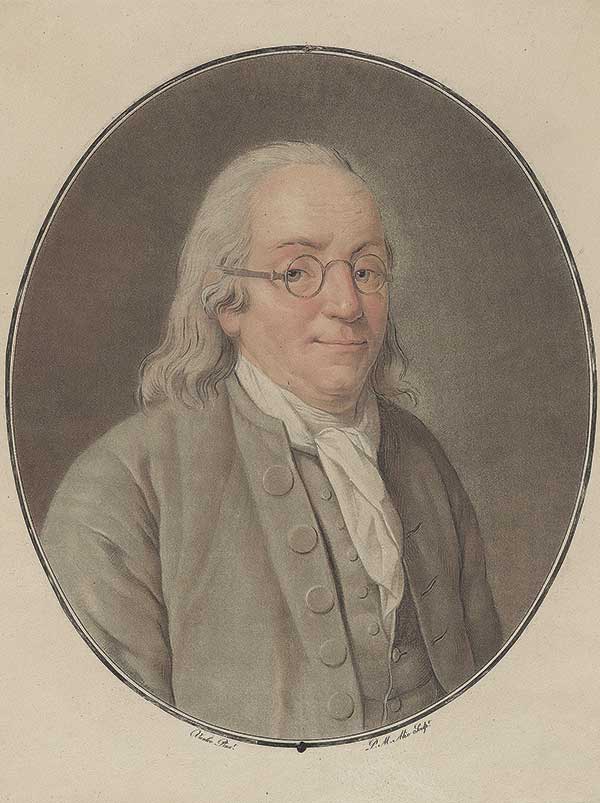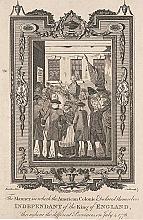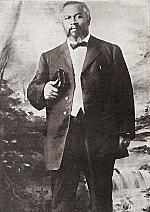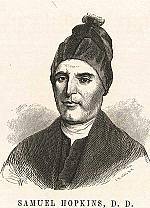The awakeners

[Pierre-Michel Alix, Benjamin Franklin, c. 1790, Color aquatint on paper—[CC0] National Portrait Gallery, Smithsonian Institution]
In 1727, an earthquake shook much of New England. Many felt God was trying to get people’s attention and make them more receptive to the spiritual tremors of the following two decades. Yet this Great Awakening didn’t just occur in America. A few months before that earthquake, and half a world away, a devout group of Christians in Saxony experienced a spiritual awakening of their own, as they agreed on a set of principles for their faith community. And in England about this time, Charles Wesley (1707–1788) began to meet for prayer with a group of classmates who would later be labeled, derisively, “Methodists.” In all these places and more, the church seemed ready to wake up, and faithful leaders arose to sound the bell.
A rich young ruler
Count Nicolaus Ludwig von Zinzendorf has been called “the rich young ruler who said yes.” Born into European nobility, he received a great education and inherited a vast estate. Among his early influences were two giants of the Pietist movement within the Lutheran Church—his godfather, Philipp Spener, and his schoolmaster, Augustus Francke. As a young adult, Zinzendorf learned about a group of Christians who needed a home. Unitas Fratrum, or the Unity of the Brethren, had roots in Bohemia and Moravia. Heirs of Jan Hus’s teaching, this group had been lost in the shuffle of the Protestant Reformation. Nobody supported them—not Catholics, not Lutherans, not Calvinists.
But in 1722 Zinzendorf invited them to seek refuge on his estate at Herrnhut (see p. 17). These early Moravians were unusual for their time in that women had many opportunities for ministry. One standout was Anna Nitschmann (1715–1760), who became “eldress” of the community while quite young and later served as a missionary to Native Americans in Pennsylvania. She was also known for hymn writing, another important aspect of Moravian culture.
Strangely warmed hearts
Yet the Moravians’ best-known “converts” were not in America but in England—brothers John Wesley (1703–1791) and Charles Wesley. The 1730s were formative years for the Wesley brothers. Born into the home of an Anglican minister, these two led the Holy Club, a cadre of Oxford students seeking to be more serious about their Christian faith. This group also included a young man named George Whitefield, who would become a powerful revivalist. In 1735 the Wesleys traveled as missionaries to the newly formed American colony of Georgia. On the voyage to America, a sudden storm threatened their ship, terrifying John. He found comfort in the calm faith of some hymn-singing Moravians. The time in Georgia was stormy for both John and Charles, and they returned to England, defeated.
Yet, after further interactions with Moravian missionaries, both brothers experienced similar spiritual awakenings a few days apart in May 1738. John Wesley famously wrote about his heart being “strangely warmed” when he heard a Moravian preacher’s sermon about what Christ had done for him. Thousands of others had similar experiences during Great Awakening revivals in Europe and America. Many of those “awakened” already knew the facts of Christianity, as the Wesleys did, but now it became personal. It became emotional.
Moved by the Spirit?
Emotion was a source of continual controversy in the preaching of George Whitefield. While the Wesleys were struggling in America, Whitefield was being asked to preach throughout England. He had a dramatic flair, possibly owing to some theatrical training in his youth, and a strong voice. When necessary he could hold outdoor meetings and still be heard. People flocked to hear him, and many were moved, emotionally and spiritually, by his gospel message.
When John Wesley returned from America, he used many of the same methods speaking throughout the British Isles, often to those in the lower classes, especially coal miners. One innovation developed by both Whitefield and John Wesley was extemporaneous speaking (originally “discovered” when they misplaced their notes). People appreciated the in-the-moment quality of these sermons, which resulted in a more personal response.
One significant backer of both these preachers was Selina Hastings (1707–1791), Countess of Huntingdon, who connected early with John Wesley and the Methodist movement. Later Whitefield served as her chaplain. She used her wealth and influence to promote and enhance their ministries, founding dozens of chapels throughout England.
Whitefield made his first preaching tour of the American colonies from 1739 to 1741, centering in Philadelphia but extending from New Hampshire to Georgia. As Whitefield made his way through Massachusetts, he was invited to speak at the Northampton church pastored by Jonathan Edwards (1703–1758), who had become a renowned expert in spiritual awakenings. Edwards seemed cordial but careful in his interactions with this stunningly popular preacher, but his wife, Sarah, enthusiastically supported Whitefield. “It is wonderful to see what a spell he casts over an audience,” she wrote. “I have seen upwards of a thousand people hang on his words with breathless silence, broken only by an occasional half-suppressed sob.”
Studying revival
Jonathan and Sarah Edwards had experienced awakening in their church about five years earlier. In the fall of 1734, Jonathan preached about justification by faith alone, and for six months afterward, people were being smitten with an emotional response to God. Among the smitten was Sarah herself. Jonathan’s major contribution was his scholarly study of the phenomenon. The religious elite tended to look down on emotional responses, but Jonathan Edwards respected these displays of “religious affections,” as he called them. He wrote a well-regarded treatise on the subject, A Faithful Narrative of the Surprising Work of God (1737), as well as many other important theological works. He and Sarah both died in 1758.
As for the other awakeners, Whitefield made several more trips to America and died in 1770, after preaching at a church in Massachusetts. Though he had some theological differences with Whitefield, John Wesley preached at several memorial services in England for his old friend. Charles Wesley died in 1788, while John lived until 1791, providing leadership and organization to the Methodist movement.
It has been said that the Methodists brought a hope to England’s lower classes that prevented a bloody revolution like the one that occurred in France in 1789. It has been suggested that the Great Awakening in America gave birth to an independent spirit that fueled the American Revolution. And we know that Moravian missionaries inspired many others to carry the Christian message around the world. But amid all the possible results of these revivals, we see the miracle of revival itself: dead and dying religion finding new life in the fresh breeze of the Spirit. CH
- - - - -
The fertile friendship of Whitefield and Franklin
The two most famous men in eighteenth-century America knew each other well. Evangelist George Whitefield and publisher-writer-scientist-diplomat Benjamin Franklin (1706–1790) carried on a decades-long correspondence.
At first, it was just business. As Whitefield sought to expand a successful ministry from England to America, he knew the value of good press. As publisher of the Pennsylvania Gazette, Franklin knew the importance of good content.
Soon Franklin was printing diaries, sermon texts, news items, and editorials about Whitefield’s work, using his network of news outlets to increase sales throughout the colonies. As one modern historian quipped, “Franklin made Whitefield famous. Whitefield made Franklin rich.”
Scholars debate how deep their friendship went, but it certainly lasted a long time. The two supported each other in critical times, even defending each other before the public in their writing. Over their 30-year acquaintance, Whitefield made many attempts to nudge his publisher toward a personal commitment to Christ. Franklin seemed to receive these overtures politely but deflected them. While Franklin had a respect for the Puritan religion of his childhood, he kept trying to invent his own faith. He donated to churches of different denominations, though his attendance at any of them was sporadic. Still he recognized the value of spiritual fervor and lauded the societal effects of Whitefield’s revivals.
Late in their relationship, Franklin wrote a fascinating letter to Whitefield in which he mused about the two of them starting a new colony out in the wilds of Ohio. As Franklin saw it, any community needed what those two leaders offered—practical organization and spiritual commitment. However, as we look back from the twenty-first century, we see that they didn’t need to start a new colony elsewhere. America was that new society.
The list of Franklin’s inventions goes far beyond a lightning rod and a stove. His numerous inventions and innovations wove the social fabric of America. Meanwhile, as Whitefield preached to crowds throughout all the colonies, he was calling colonists to spiritual freedom. A generation before America fought for its independence, these two men were already laying its foundation.
By Randy Petersen
[Christian History originally published this article in Christian History Issue #151 in 2024]
Randy Petersen has written dozens of books, including The Printer and the Preacher (Nelson, 2015). He’s also coauthor of The 100 Most Important Dates in Christian History (Revell, 1991) and a former editor of CH.Next articles
Lightning strikes
During the First Great Awakening, revival swept through England and the American colonies like a storm
Rebecca Price JanneyChristian History timeline: awakenings, renewals, revivals
Revival movements of the early and modern eras
the editorsSupport us
Christian History Institute (CHI) is a non-profit Pennsylvania corporation founded in 1982. Your donations support the continuation of this ministry
Donate







